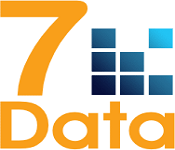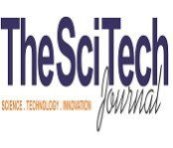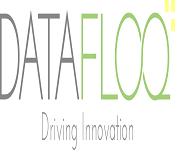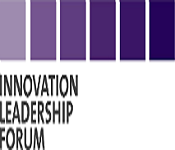Theme: An Innovative Outlook About The Emerging Trends In Computer Science
Computer Science Meet 2018
- Machine Learning And Big Data Analytics Conference
- Sessions/Tracks
- Market Analysis
- New Updates:Machine Learning and Big Data
- Past Conference Report
COMPUTER SCIENCE MEET 2018
The Computer Science Meet 2018 cordially invites all the participants across the globe to attend the World Congress on “Computer Science and Machine learning and Big Data Analytics conference” which is going to be held during August 30-31, 2018, Dubai, UAE to share the ideas in globally trending technologies in Machine learning, Big data, Artificial Intelligence and many more.
Importance and Scope
Machine learning is the science of getting computers to act without being explicitly programmed. In the past decade, machine learning has given us self-driving cars, practical speech recognition, effective web search, and a vastly improved understanding of the human genome. Machine learning is so pervasive today that you probably use it dozens of times a day without knowing it. Many researchers also think it is the best way to make progress towards human-level AI. The current era fully rolled out with many new Artificial Intelligence technologies. In such case, more Software companies and industries were newly introduced within the market which obviously shows the market growth of Artificial Intelligence.
While analyzing the revenue growth of Artificial Intelligence, it highly developed from $150 billion USD to $250 billion USD since from 2010-2015. And the annual growth percentage increases from 20-55 percentages, which clearly shows that Software technology contains huge scope in coming years. Machine learning means using predictive analytics and intelligent automation to formulate data-driven predictions. It allows marketers to identify the likelihood of future outcomes based on historical data. In a recent survey of top marketing influencers, 97% said that the future of marketing will be a combination smart people armed with machine learning – in other words, that machine learning is the future of marketing. Want to make sense of the volumes of data you have collected? Need to incorporate data-driven decisions into your process? This Conference provides an overview of machine learning techniques to explore, analyze, and leverage the Bigdata. Machine learning is ideal for exploiting the opportunities hidden in big data.
Artificial Intelligence has witnessed tremendous growth in the recent past due to the necessity for advancement in the areas of machine translation, object perception, and object recognition. The landscape of tools and infrastructure for training and deploying of neural networks via ‘Machine Learning’ is further evolving rapidly. The rapid uptake of artificial intelligence in end-use industries such as retail and business analytics is expected to augment growth over the next few years.
The deep learning & machine learning would cover the major investment area in AI throughout the forecast period. It includes both cognitive applications (i.e. machine learning, searching, tagging, text and rich media analytics, filtering, categorization, clustering, hypothesis generation, question answering, visualization, alerting, and navigation) and AI platforms, which facilitate the development of intelligent, advisory, and cognitively enabled solutions.
Analytics is another major segment expected to witness bullish growth over the coming years and is major because increasing awareness, needs, and adoption of big data analytics among several small and large enterprises. Organizations are increasingly adopting these solutions owing to the growing need to make fact-based strategic business decisions to reduce the risk of failure and excel in this highly competitive environment.
Why to attend?
With members from around the world focused on learning about Machine learning, Artificial Intelligence, and Big data technologies, this is your single best opportunity to reach the largest assemblage of participants from the Global Information Technology Community. Conduct demonstrations, distribute information, acquire knowledge about current and trending global technologies, make a splash with a new research, and receive name recognition at this 2-day event. World-renowned speakers, the most recent techniques, tactics, and the newest updates in the Machine learning, Artificial Intelligence, and Bigdata Analytics are the hallmarks of this conference.
Target Audience
· Scientists/Researchers
· President/Vice president
· Chairman’s/Directors
· Professors, Data Analysts
· Data Scientists
· Experts and Delegates etc.
· Heads, Deans, and Professors of Computer Science Departments
· Research Scholar
· Engineers
· Consultants
· Lab technicians
· Founders and employees of the related companies
Highlights and Advancements in Computer Science, Machine Learning, and Big Data Analytics
Track 1 Computer Science and Technology
Computer Science Technology forms the technological infrastructure of recent commerce. Engineering is associate ever-evolving, increasing field. It is the drive of each trade and permeates way of life. It is the flexibility to mix the ability of computing with the management of multimedia system information and is arguably the key to get an ascendancy in any field.
-
Scientific computing
-
Computer graphics
-
Algorithmic trading
-
Simulation
-
Human-Computer Interaction
Track 2 Machine learning
Machine learning is a kind of computing (Artificial Intelligence) which permit software system applications to become additionally correct in predicting outcomes while not being expressly programmed. The essential plan of machine learning is to compile algorithms which receive input file associate degree and is used in applied mathematical analysis to foresee an output worth among a satisfactory vary.
-
Machine learning algorithms
-
Supervised learning
-
Unsupervised learning
Track 3 Deep learning
Deep learning is associated with the developments in computing power and special sorts of neural networks to check the advanced patterns in a large amount of knowledge. Deep learning techniques is a square measure, present the state of the art for characteristic objects in pictures and words are in sounds. Researchers currently expect to apply these successes in pattern recognition to a lot of advanced tasks like automatic language translation, medical diagnoses and diverse which are necessary in social and business issues.
-
How to build neural networks
-
Convolutional networks
-
RNNs, LSTM, Adam, Dropout, BatchNorm
-
Xavier/He initialization
Track 4 Artificial intelligence
AI or computer science is the simulation of human intelligence processes by machines, particularly by PC systems. These processes embrace learning (the acquisition of data and rules for victimization the information), reasoning (using the foundations to achieve approximate or definite conclusions), and self-correction. Applications of AI embrace skilled systems, speech recognition, and machine vision. Today, it's AN umbrella term that encompasses everything from robotic method automation to actual AI. It's gained prominence is recently due to the in part, to big data, or to the rise in speed, size, style of information and businesses square measure which is currently grouping. AI will perform tasks like distinguishing patterns within the information additional expeditiously than human businesses to realize additional insight out of their information.
-
Robotic process automation
-
Machine vision
-
Natural language processing
-
Robotics
Track 5 Artificial intelligence applications
A.I. is getting used nowadays by businesses in both huge and tiny. About what proportion of effect will the A.I have on our future and in what ways will it be succeeded in our day-to-day life? Once A.I. really blossoms, what proportion of improvement can it have on the present iterations of this technology?
-
AI in healthcare
-
AI in business
-
AI in education
-
AI in finance
-
AI in manufacturing
Track 6 Bigdata
Big information may be a term that describes the big volume of information – each structured and unstructured – that inundates a business on a day-after-day basis. However, it’s not the number of information that’s necessary. It is what organizations do with the information that matters. Big Data information will be analyzed for insights that cause higher selections and strategic business moves. The number of information that’s being created and hold on a world level is nearly unthinkable, and it simply keeps growing. Meaning there’s even a lot of potential to harvest key insights from business information nonetheless solely a little share of information is analyzed. What will that mean for businesses? However, they will create higher use of the raw info that flows into their organizations each day.
-
Streaming data
-
Social media data
-
Publicly available sources
-
Data Exploration & Visualization Importance of Big data
-
Applications of Big data
Track 7 Big data analytics
Artificial Intelligence (AI), mobile, social and Internet of Things (IoT) are driving information complexness, new forms and sources of knowledge. Big Data analytics is that the use of advanced analytic techniques against terribly giant, numerous information sets that embrace structured, semi-structured and unstructured information, from totally different sources, and in several sizes from terabytes to zettabytes. Analyzing huge information permits analysts, researchers, and business users to create higher and quicker selections victimization information that was antecedently inaccessible or unusable.Victimization advanced analytics techniques like text analytics, machine learning, prognostic analytics, data processing, statistics, and language process, businesses will analyze antecedently untapped information sources freelance or at the side of their existing enterprise information to realize new insights leading to higher and quicker selections.
-
Big data Hadoop
-
Apache
-
Scala
-
Spark
Track 8 Data Mining
Data mining is thought of a superset of the many different strategies to extract insights from knowledge. It would involve ancient applied mathematics strategies and machine learning. Data processing applies strategies from many alternative areas to spot antecedently unknown patterns from knowledge. This could embody applied mathematics, algorithms, machine learning, text analytics, statistical analysis and alternative areas of analytics. Data processing conjointly includes the study and follow the knowledge of storage and data manipulation.
-
High-performance data mining algorithm
-
Data Mining in Healthcare data
-
Medical Data Mining
-
Advanced Database and Web Application
-
Data mining and processing in bioinformatics, genomics and biometrics
Track 9 Cloud computing
The cornerstone of data analytics in cloud computing is cloud computing itself. Cloud Computing is made around a series of hardware and computer code that may be remotely accessed through any web browser. Usually, files and computer code area unit shared and worked on by multiple users and everyone knowledge is remotely centralized rather than being hold on users’ onerous drives.
-
IoT on Cloud Computing
-
Fog Computing
-
Cognitive Computing
-
Mobile Cloud Computing
Track 10 Data analytics in cloud
Businesses have used data analytics to assist their strategy to maximize profits. Ideally, information analytics helps to eliminate a lot of the estimate concerned in making an attempt to know purchasers, instead systemically following information patterns to best construct business techniques and operations to reduce uncertainty. Not solely will analytics verify what may attract new customers, usually, analytics acknowledges existing patterns in information to assist higher serve existing customers, that is usually less expensive than establishing a replacement business. In an associate degree dynamic business world subject to unnumbered variants, analytics provides firms the sting in recognizing dynamical climates, in order that they will take initiate applicable action to remain competitive. aboard analytics, cloud computing is additionally serving to create business simpler and therefore the consolidation of each cloud and analytics may facilitate businesses store, interpret, and method their massive information is raised to meet their clients’ wants.
-
Software as a service (SaaS)
-
SaaS examples
-
Best uses of Data analytics in cloud
-
Future of Data analytics in cloud
Track 11 Cloud computing in E-commerce
Distributed computing may be a style of Internet-based imagining that offers shared handling resources and knowledge to PCs and in contrast to devices on concentration. it's a typical for authorizing pervasive, on-interest access to a typical pool of configurable registering assets which might be quickly provisioned and discharged with insignificant administration travail. Distributed calculative and volume preparations provide shoppers and ventures with totally different skills to store and procedure their data in outsider data trots. It depends on sharing of assets to accomplish rationality and economy of scale, sort of a utility over a system.
-
Microsoft Azure Cloud Computing
-
Amazon Web Services
-
Google Cloud
-
Cloud Automation and Optimization
-
High-Performance Computing (HPC)
-
· Emerging Cloud Computing Technology
Track 12 Business Intelligence
The competitive intelligence might be a technology-driven methodology for Analyzing data and presenting an unjust information to help executives, managers, and different company end users to produce enlightened businesses selections. Business intelligence will be employed by enterprises to support a large vary of business choices - starting from operational to strategic. Basic operational choices embody product positioning or valuation. Metal encompasses a decent kind of tools, applications, and methodologies that differentiate the corporations to collect information from internal and external sources; prepare it for analysis; develop and activate queries against the data; and build reports, dashboards and knowledge visualizations to make the analytical results on the market to the corporate decision-makers, likewise as operational staff.
-
Why BI is important?
-
Types of BI tools
-
BI trends
-
BI for Big data
Track 13 SAP SAS (Statistical Analysis System)
SAP is an ERP (Enterprise Resource Planning) software while SAS is an analytics package developed by SAS (Statistical Analysis System) institute. It was founded by James Goodnight and several Colleagues in 1976 from North Carolina State University. Currently, it is used as an integration of software products that enables anyone to perform: Data Manipulation, Statistical and mathematical analysis, Planning, forecasting and decision Support, Report Writing and Graphics, Quality Improvement, Applications Development, Web Reporting, Data Entry, Retrieval, and Management, Data Warehousing and Data Mining. SAS runs on both Windows and UNIX platforms. It is used in a wide range of industries such as healthcare, education, financial services, life sciences etc.
-
SAS Administrators
-
Customer Intelligence
-
Data Management
-
Risk Management
-
Fraud & Security Intelligence
-
Data Visualization
Track 14 Iot (Internet of things)
New intelligent things typically constitute 3 categories: robots, drones and autonomous vehicles. Every one of these areas can evolve to impact a bigger section of the market and support a brand-new section of digital business, however, these represent just one aspect of intelligent things. Existing things together with internet of Things (IoT) devices can become intelligent things delivering the facility of AI enabled systems all over together with the house, office, manufacturing plant floor, and medical facility. the forthcoming revolution of the Internet-of-Things (IoT) and ensuring connectedness of sensible home technology for years.
Internet of Things (IoT) is associate degree system which is connected to physical objects that square measure accessible through the web. The ‘thing’ in IoT might be someone with a cardiac monitor or associate degree automobile with built-in-sensors, i.e. objects that are allotted associate degree science address and might collect and transfer knowledge over a network while not manual help or intervention. The embedded technology within the objects helps them to move with internal states or the external surroundings, that successively affects the choices taken. IoT – and therefore the machine-to-machine (M2M) technology behind it – square measure transfers a form of “super visibility” to just about each business. Imagine utilities and telcos that may predict and stop service outages, airlines that may remotely monitor and optimize plane performance, and care organizations that are based on health care on period ordering analysis. The business prospects square measure endless.
-
Why IOT?
-
What is the scope of IOT?
-
How can IOT help?
Track 15 Augmented reality (AR) and Virtual reality
Virtual reality (VR) associated Augmented reality (AR) rework the way people move with one another and with package systems making an immersive setting. for instance, VR will be used for coaching situations and remote experiences. AR, that allows a mixing of the important and virtual worlds, means that businesses will overlay graphics onto real-world objects, like hidden wires on the image of a wall. Immersive experiences with AR and VR area unit reaching tipping points in terms of value and capability, however, it won't replace different interface models. Over time AR and VR expand on the far side visual immersion to incorporate all human senses. Enterprises ought to rummage around for targeted applications of VR and AR through 2020.
-
Computer-mediated reality
-
Object recognition
-
Virtual fixture
Market analysis of Machine learning
The global machine learning market is expected to grow from USD 1.41 Billion in 2017 to USD 8.81 Billion by 2022, at a Compound Annual Growth Rate (CAGR) of 44.1%. The main driving factors for the market are a proliferation of data generation and technological advancement. In the services segment, the managed service segment is expected to grow at a higher CAGR, whereas professional service segment is expected to be a larger contributor during the forecast period. The managed service is said to be growing faster, as it helps organizations to increase efficiency and save costs by managing on-demand machine learning services.
Industry insights of AI
The global artificial intelligence market size was valued at USD 641.9 million in 2016 on the basis of its direct revenue sources and at USD 5,970.0 million in 2016 on the basis on enabled revenue and AI-based gross value addition (GVA) prognoses. The market is projected to reach USD 35,870.0 million by 2025 by its direct revenue sources, growing at a CAGR of 57.2% from 2017 to 2025, whereas it is expected to garner around USD 58,975.4 million by 2025 from its enabled revenue arenas. Considerable improvements in commercial prospects of AI deployment and advancements in dynamic artificial intelligence solutions are driving the industry growth.
The Artificial Intelligence industry is segmented by core technologies into Natural Language Processing (NLP), Machine Learning, Deep Learning, and Machine Vision archetype. Deep Learning technology segment is anticipated to dominate the AI market; both in terms of revenue and CAGR over the forecast period of 2017 to 2025. ‘Deep Learning’ technology is gaining prominence because of its complex data driven applications including voice and image recognition. It offers a huge investment opportunity as it can be leveraged over other technologies to overcome the challenges of high data volumes, high computing power, and improvement in data storage.
Market analysis of Bigdata
The global big data market size was valued at USD 25.67 billion in 2015 and is expected to witness a significant growth over the forecast period. The elevating number of virtual online offices coupled with increasing popularity of social media producing an enormous amount of data is a major factor driving growth. Increased internet penetration owing to the several advantages including unlimited communication, abundant information and resources, easy sharing, and online services generates huge chunks of data in everyday life, which is also anticipated to propel demand over the coming years.

The statistic shows a revenue forecast for the global big data industry from 2011 to 2026. For 2017, the source projects the global big data market size to grow to just under 34 billion U.S. dollars in revenue.
Related Conferences
Engineering conferences | Machine learning conferences | Natural language conferences | Artificial Intelligence Conferences | Deep learning conferences | AI/Robotics conferences | Big data conferences | Data management conferences | Data science conferences | Data analytics conferences | Data mining conferences | Cloud computing conferences | Internet Technology conferences
1) International Conference on Big data, Knowledge Discovery and Data Mining, August 6-7, 2018, Abu- Dhabi, UAE
2) Global Summit on Machine learning and Deep learning, August 30-31, 2018, Dubai, UAE
3) World Congress on Artificial Intelligence and Neural networks, October 15-16, 2018, Helsinki, Finland
4) Global Conference on Mechatronics and Robotics, October 15-16, 2018, Helsinki, Finland
5) International Conference on Artificial Intelligence, Robotics & IoT, August 21-22, 2018, Paris, France
6) Global Conference on Artificial Intelligence, April 16-17, 2018, Las Vegas, USA
7) Global Summit on Automation and Robotics, April 16-17, 2018, Las Vegas, USA
8) International Conference on Computer Science and Engineering, June 20–21, 2018, Oslo, Norway
9) International Summit on Big data analysis and Data mining, June 20-21, 2018, Rome, Italy
10) International conference on Bigdata computing, applications and technologies, December 5-8, 2018, Austin, Texas, United States
11) Global Summit on Agents and Artificial Intelligence, January 16-18, 2018, Madrid, Portugal
12) International Conference on Artificial Intelligence, July 13-19 2018, Stockholm, Sweden
13) Global Summit Expo on Deep Learning, January 25-26, 2018, San Francisco, USA
14) International Conference on Machine Learning, July 10-15, 2018, Stockholm, Sweden.
15) World Conference on Big Data Analytics & Data Mining, September 26-27, 2018, Chicago, USA.
16) World Congress on Computer Graphics & Animation, August 29-30, 2018, Tokyo, Japan.
17) Global Big Data Innovation, Data Mining and Analytics Summit, August 20-21, 2018, Singapore.
18) World Summit on Robots and Deep Learning, September 10-11, 2018, Singapore.
19) World Congress on Telecommunications, Cloud Computing and Wireless Technology, August 22-23, 2018, Singapore.
20) Global Summit on Computer Graphics & Animation, September 26-27, 2018, Montreal, Canada.
21) Global Conference on Data Analysis and Cloud Computing, September 06-07, 2018, London, UK.
Related Societies
1) Association for Computing Machinery (ACM), USA
2) British Automation and Robot Association (BARA), UK
3) Association Française pour l'Intelligence Artificielle, France
4) Canadian Artificial Intelligence, Canada
5) Japan Robot Association (JARA), Japan
6) International Federation of Robotics (IFR), Germany
7) ARC Centre of Excellence for Robotic Vision, Australia
8) Technische Hochschule Ingolstadt, Germany
9) Big Data Europe Empowering Communities with Data Technologies, Europe; Big Data and Society, United Kingdom
10)Advanced Analytics Institute, Australia
11) American Statistical Association, United States
12) International Educational Data Mining Society, United States
13) The Society of Data Miners: The professional body for data analytics, data science, and data mining, United States
14) IEEE Computational Intelligence Society, United States
15) Data Mining Section of INFORMS, United States
16) International Institute for Analytics, Oregon, USA
17) The International Machine Learning Society, Germany
18) Mexican Society of Artificial Intelligence (SMIA), Mexico
19) Finnish Artificial Intelligence Society (FAIS), Finland
20) Canadian Artificial Intelligence Association, Canada
21) Sri Lanka Association for Artificial Intelligence (SLAAI), Srilanka
22) International Association of Computer Science and Information Technology, USA
23) The Australian Pattern Recognition Society, Australia
Related societies by continent:
America
IBM Research, IEEE Circuits and Systems Society, IEEE Computer Society, IEEE Systems, Man, and Cybernetics Society, ACCU (Organisation), ACM SIGARCH, ACM SIGHPC, ACM SIGOPS, American Federation of Information Processing Societies, Association for Automated Reasoning, Association for Computing Machinery, ACM-W, List of ACM-W chapters, SIGAI, Association for Logic Programming, Association for Logic, Language and Information, Association for the Advancement of Artificial Intelligence, Brazilian Computer Society, Canadian Information Processing Society, Institute of IT Professionals, International Association for Pattern Recognition, Internet Technical Committee
Asia Pacific
Indian Association for Research in Computing Science, Australian Committee on Computation and Automatic Control, Australian Computer Society, Australian Partnership for Advanced Computing, Computer Society of Sri Lanka, Information Processing Society of Japan, Information Retrieval Facility, Malaysian National Computer Confederation, Memetic Computing Society, National Centre for Text Mining, Philippine Society of Information Technology Educators, Seoul Accord Society for the Study of Artificial Intelligence and the Simulation of Behavior, Sri Lanka Software Testing Board
Europe
Raspberry Pi Foundation, British Colloquium for Theoretical Computer Science, British Computer Society, European Association for Theoretical Computer Science, European Society for Fuzzy Logic and Technology, Computability in Europe, Computer Science Teachers Association, Gelato Federation, Gesellschaft für Informatik, Informatics Europe, Irish Computer Society, Scottish Informatics and Computer Science Alliance, Swiss Informatics Society, XML UK
Middle-east
Foundation & Development - Society of Engineers, Society of Engineers - UAE, IEEE Saudi Arabia, Qatar Foundation, Qatar Computing Research Institute, Bahrain Society of Engineers, Computer Science Major, Computer Science and Information Systems, Kuwait Institute for Scientific Research.
List of University
Asia
Europe
Australia
North/South America
Africa
Emerging Trends in Computer Science
Types of Datasets in Machine Learning
They are mainly three different types of datasets in Machine Learning. They are as follows:
- Training,
- Testing,
- Validation.
As we know previously, Machine Learning is all about building mathematical models as a way to understand information. The major learning aspect enters the process when the machine learning has a capability of adjusting its internal parameters. We will tweak those parameters so that the version explains the facts better. In a sense, this will be understood as the version of machine learning from the data. Once the model has learned enough then we can ask it to give an explanation for newly determined statistics.
Training Data Set:
A model is initially fit on a training dataset if it is a fixed example of the parameters of that model. The model is then skilled at the training dataset with the usage of a supervised mastering technique. In practice, the training dataset frequently encompasses a pair of an enter vector and the corresponding answer vector or scalar, which is typically denoted as the target. The contemporary model will run with the training dataset and produces an end result, which is then compared with the target, for every enter vector inside the training dataset. It is primarily based on the end result of the contrast and the particular mastering set of rules being used, the parameters of the model are adjusted. The model fitting can include each variable selection and parameter estimation.
Testing Data Set:
A testing at dataset is a dataset that is unbiased of the training dataset, however, that follows the same possibility of distribution as the training dataset. If a model is fit to the training dataset then it also suits the test dataset as well. A better fitting of the training dataset as opposed to the testing dataset.A test set is, therefore an example used for the best to evaluate the performance (i.e. generalization). Once a model is trained on a training set, it is generally evaluated on a data set. Probably, these units are taken from the identical dataset, although the training set needs to be classified or enriched to increase an algorithm’s accuracy.
In the case of a trained network, the error can be computed by computing the sum of squares mistakes among the output and the target. We should not use the equal information for training as well as for testing. As it doesn’t allow us to know how properly the network generalizes and whether the overfitting has passed off or not. Therefore, we have to maintain separate pair in reserve for test set (input target) which aren't used for training purpose. This sort of information set is called as Testing Dataset.
Validation Set:
Successively, the fitted model is used to predict the responses for the observations in a third dataset called the validation dataset.Things get more complicated when we check how well the network is learning during training so that when to stop can be decided. As per we cannot use training data as well as the testing data because the training data set is overfitting, and the testing data set is for the final test.Thus, the third data set is called as the validation set and it is required to validate the learning so far. In statistics and it is known as cross-validation.
MACHINE LEARNING
Machine Learning is being a running heritage for years, powering cell packages and search engines like google. But currently, it has come to be a broadly circulated buzzword, with clearly all the latest technological improvements regarding some things of machine learning. An impressive upward thrust in facts and computing capabilities has made this exponential progress possible.
The splendid increase in sophistication and programs of gadget studying will define the technological trends of 2017. Their consequences will rely upon whether or not the utility provides fee and advantages to society as an entire and whether it has the capacity to clear up actual world troubles.
Machine learning (ML) and Artificial intelligence (AI) are advanced because of the ubiquity and speed of the hardware. There are pivotal matters occurring, but the last in truly captivating essential advances is Latent Dirichlet Allocation. Current advances were very mechanical, with the aid of the maximum exciting component now in ML is adverse than AI, in which people are showing that ML structures are at risk of statistics that they are able to count on and don’t apprehend because ML structures don’t apprehend something, and in case you know how a model was built, you can determine it. But, AI isn’t new; it’s the same problem and technique (to a point) that can explore community unrolling 20+ years ago to recognize neural networks, it’s just that we will not do even minimal unrolling anymore, so it’s easier to show flaws via demonstration, but not derivation.
The big data revolution is a way to transform how we live, work, and assume with the aid of process optimization, empowering perception discovery and enhancing selection making. The theme of this grand capacity is based on the ability to extract the value from such huge data via statistics analytics; gadget mastering it is at its center because of its potential to analyze the information and offer records pushed insights, selections, and predictions. However, traditional gadget learning strategies were evolved in an exceptional generation, and they are based totally upon a couple of assumptions, consisting of the information set becoming absolutely into memory, these broken assumptions, together with the massive statistics traits, are growing obstacles for the conventional techniques. Therefore, this compile summarizes and organizes machine learning challenges with data information. In comparison to different studies that discuss challenges, this work highlights the cause-effect courting with the aid of organizing challenges in line with Big Data Vs or dimensions that instigated the difficulty: quantity, speed, variety, or veracity. Furthermore, emerging system mastering methods and strategies are discussed in phrases of the way they may be capable of dealing with the numerous challenges with the final objective of helping practitioners pick out appropriate solutions for his or her use cases. Ultimately, a matrix relating the challenges and strategies is presented through the Big Data Analytics
DATA MINING
The Data mining is the system of discovering patterns in a massive information sets related to techniques at the intersection of gadget learning, information, and database systems. It is a process utilized by businesses to turn uncooked records into beneficial information. By the usage of software to search for patterns in big batches of records, and businesses can examine them approximately by their customers and broaden more effective advertising techniques in addition to boom income and reduce the charges. Data mining depends on effective records of series and warehousing in addition to computer processing. This is related to the algorithms for locating styles in big information sets. It is a necessary part of a contemporary enterprise, wherein data from its operations and clients are mined for gaining commercial enterprise perception. It is also vital in contemporary clinical endeavors. This is an interdisciplinary topic related to, databases, gadget getting to know the algorithms.
The actual data mining challenge is the semi-automatic or computerized evaluation of large portions of records to extract previously unknown, interesting patterns which include companies of statistics data (cluster evaluation), unusual facts (anomaly detection), and dependencies (association rule mining, sequential sample mining).
The Data mining can be misused and may then produce consequences which appear to be significant. However, which are not in reality but can be expected in future conduct and cannot reproduce a new pattern of information and endure little use.
It is the exercise of automatically looking big stores of facts to find out styles and tendencies that cross past simple analysis. This makes use of state-of-the-art mathematical algorithms to segment the statistics and compare the opportunity of future occasions. Data mining is also referred to as Knowledge Discovery in Data(KDD).
Machine learning Algorithms
They are different kinds of Machine Learning Algorithms that classified based upon their purpose some of them are discussed below:
· Supervised learning
· Unsupervised Learning
· Semi-supervised Learning
· Reinforcement Learning
Supervised Learning
- The supervised learning is the concept of characteristic approximation, where essentially, we make an algorithm and at the end of the method we choose the feature that best describes the enter data. Maximum of the time we aren't able to figure out the proper character that constantly makes the best predictions and other motive is that the set of rules depend on an assumption made through people about how the computer must research, and this assumption introduces a bias.
- Supervised learning algorithms try to model relationships and dependencies among the target prediction output and the input features such that we expect the output values for new facts primarily based on the relationships which it can find from the previous statistics units.
Unsupervised Learning
- The computer is being trained with unlabeled statistics. In reality, the computer is being capable of teaching you knew things after it learns the patterns in statistics, these algorithms are especially useful in instances where the human professional doesn’t know what to search for internal records.
- The machine learning algorithms are particularly used in sample detection and descriptive modeling. but, they are no output categories or labels here based on which the set of rules can try and model relationships. In the unsupervised algorithm, they try to use strategies on the input facts to mine for rules, locate styles and summarize and the organization information points out the meaningful insights and describes the information better to the customers.
Semi-supervised Learning
- As discussed above two types, either there are no labels for all the remark in the dataset or labels, but they are present for all of the observations. Semi-supervised learning falls among these. In many sensible situations, the cost to label is pretty excessive, because it calls for skilled human experts to try this. So, even though the absence of labels in the public of the observations however found in few, semi-supervised algorithms are the pleasant applicants for the model constructing. Those methods make the idea that the fact in the organization memberships of the unlabeled information is unknown, this statistic incorporates and are important about the group parameters
Reinforcement Learning
- This technique targets at using observations accumulated from the interplay with the surroundings to take actions that could maximize the reward or decrease the hazard. Reinforcement learning algorithm (called the agent) continuously learns from the environment in an iterative style. Within the procedure, the agent learns from its studies of the environment until it explores the full range of possible states.
- Reinforcement learning is a form of device mastering, and thereby also a department of Artificial Intelligence. It lets in machines and software retailers to automatically determine the correct conduct inside a context, to be able to maximize its performance. Simple reward feedback is needed for the agent to examine its conduct; that is referred to as the reinforcement sign
How Machine Learning is used in Diagnosis
Identification of diseases and analyzing the ailments is at the forefront of ML research in medicine. According to the research report of 2015 issued by Pharmaceutical researchers and manufactures of the United States, more than 800 medicines and vaccines to treat cancer were on trial. It additionally offers the project of finding methods to work with all the ensuing records. “This is in which the idea of a biologist running with information scientists and computation lists is so critical.”
It’s no surprise that large players were some of the first to jump on the bandwagon, most probably high-need areas like cancer identification and treatment. In October 2016, IBM Watson health announced IBM Watson Genomics, a partnership initiative with Quest Diagnostics, whose main idea was to make strides in precision remedy through integrating cognitive computing and genomic tumor sequencing.
Boston-primarily based biopharma company Berg is the use of AI to research and expand diagnostics and healing treatments in more than one areas, which include oncology. The current research initiatives underway include dosage trials for intravenous tumor remedy and detection and control of prostate cancer.
In the region of brain-primarily based diseases like despair, Oxford’s P1vital Predicting reaction to depression treatment (predict). This mission is the used for predictive analytics to help diagnose and offer treatment, with the overall purpose of producing a commercially-available emotional test a battery for the use in scientific settings. Machine Learning offers a principled technique for growing state-of-the-art, automatic, and goal algorithms For the evaluation of excessive-dimensional and multimodal biomedical statistics. This evaluation specializes in numerous advances within the state of the artwork which have shown an improving detection, prognosis, and healing monitoring of sickness. Key to the development has been the development of information and theoretical evaluation of crucial issues associated with algorithmic construction and learning theory. Those consist of alternate-offs for maximizing generalization overall performance, use of bodily sensible constraints, and incorporation of prior know-how and uncertainty. The evaluation describes latest traits in gadget mastering, focusing on supervised and unsupervised linear techniques and Bayesian inference, which have made great impacts in the detection and analysis of sickness in biomedicine. We describe the unique methodologies.
Some of the other major examples include Google’s DeepMind Health, which was announced last year by UK-based partnerships, including with Moorfield’s Eye Hospital in London, in which they were developing technology to address macular degeneration in aging eyes.
Internet of Things (IoT)
The internet of things (IoT) is defined as the concept that describes the of regular physical bodies that are being connected to the internet and being able to perceive themselves to different devices like cars, home appliances and other items embedded with electronics, software, sensors, actuators, and connectivity which allows these gadgets to connect and trade information.
In IoT, everything is uniquely identifiable via the embedded system however it may inter-function with the present infrastructure. This is especially the concept of essentially connecting any tool with an on and off switch to the internet. This majorly includes cell phones, washing machines, headphones, lamps, wearable devices.
IoT additionally includes other sensor technology, wireless technologies or QR codes. IoT encompasses the entirety linked to the net however, it is being used to outline items that "talk" to each other. The internet of things is made from gadgets – from easy sensors to smartphones and wearables
IoT is an essential driver for customer-facing innovation, data-driven optimization and automation, digital transformation and entirely new applications, business models and revenue streams across all sectors. An IoT business guide with the origins, technologies, and evolutions of IoT with business examples, applications and research across industries and several use cases.
IoT is an important driver for client-dealing with innovation, data-driven optimization and automation, virtual transformation and completely new packages, commercial enterprise fashions and revenue streams throughout all sectors. An IoT enterprise manual will guide with the origins, technologies, and evolutions of IoT.
MACHINE LEARNING IN PLANT BREEDING
With the aid of machine learning, plant breeding is becoming more accurate, efficient, and capable of evaluating a much wider set of variables. Researchers in modern agriculture are testing their theories at greater scale and helping make more accurate, real-time predictions. The digital testing does not replace the physical field trials but allows plant breeders to more accurately predict the performance of crops. Such advancements offer the potential to create even more adaptable, and productive seeds to better utilize our precious natural resources. In case a new variety reaches the soil, machine learning helps the breeders to create a vetted product.
The main objective of the modern agriculture is to create seeds and crop protection products that provide relief to the global challenges. Machine learning in agriculture allows more accurate disease diagnosis it helps in eliminating waste energy and resources from misdiagnoses. As we know most of the scientists are using the new technologies in Machine Learning to evaluate how a variety of crops are grown in different sub-climates, soil types, weather patterns, and other factors.
Crop disease is the major cause of famine and food insecurity around the world. One of the many benefits of machine learning is how this technology can make more accurate and precise improvements to a process. The machine learning is playing a major role to develop more efficient seeds in plant breeding.
The Modern agriculture has the potential to discover more relevant ways on how to conserve water, and how to use nutrients and energy more efficiently, and adapt to climate change. The most innovative way of machine learning in farming was the farmers can upload field images taken by satellites, land-based rovers, pictures from smartphones, and they used this software to diagnose and develop a management plan.
AI in Agriculture Market
The global artificial intelligence in agriculture market is segmented into technology, offering application, and region. Based on technology, the global AIA market is further divided into machine learning, computer vision, and predictive analytics. An Artificial Intelligence (AI) is a creation of intelligent machines that work and react & respond like humans. It is employed to improve the efficiency of daily tasks. Moreover, remote sensing techniques are also used to survey the quality and crop producing ability of an agricultural land.
The AIA market is segmented into hardware and software. The AIA market is segmented into North America, Europe, Asia-Pacific and almost all over the world. North America is expected to hold the major market share in the global AIA market during the last decade. The AIA market has many applications in precision farming, livestock monitoring, drone analytics, agriculture robots. Based on application, the market is sub-divided as Agriculture Robots, Precision Farming, Livestock Monitoring, and Drone Analytics.
Machine learning development is the most important proportion owing to the growing adoption of the generation for numerous applications which encompass drone analytics, cattle rearing. However, Asia-Pacific is predicted to be the fastest developing market. The elements riding the growth of the Asia-Pacific market are speedy development information garage capability, high computing energy, and parallel processing.
Demystifying How Neural Networks involve in Deep Learning Theory
Deep neural networks, which mimic the human mind, have established their capability to “examine” from image, audio, and textual content information. Even after being in use for greater than a decade, they are many things that we have not yet realized about deep learning, and how neural networks examine and how they generally work. This will make a way to new principles that are applicable to deep mastering. It shows that after the preliminary phase the deep neural network will “forget” and compress noisy statistics. The data units contain lots of additional facts while preserving the facts that represent the exact information.
To know how exactly deep learning works will evolve in development of new technologies. For example, it can yield insights into most desirable network layout and structure selections, even after offering an extended transparency for protection in regular programs
Deep Convolutional neural networks (CNN's) are utilized in hundreds of layers and 10,000s of nodes. Such network sizes entail formidable challenges in education, working, and storing the networks. Very deep and extensive CNN's might also consequently not be properly suited in running below intense resource constraints as is the case, e.g., in low-electricity embedded and cell systems. This develops a harmonic analysis method to CNN's with the intention of the impact of CNN topology, intensity, and width, on the network’s feature extraction.
Deep Learning is now mainly used in various applications. However, it is regularly criticized for lacking a fundamental theory which can absolutely find a way on how it works.
Ensemble Models in Machine Learning
What is ensembling?
In standard, ensembling is a technique of combining two or more algorithms of same or different sorts known as base learners. This is carried out to make a far better device which incorporates the predictions from all the base learners. It can be understood as convention room meeting among multiple buyers to decide on whether the price of a product will rise or not.
When you consider that all have an exclusive understanding of the inventory market and for that reason an exceptional mapping feature from the hassle assertion to the favored outcome. Consequently, they're supposed to make varied predictions on the stock cost based totally on their own understandings of the market.
Now we can take all of those predictions into account by making the very final decision. This will make our final selection more relevant, accurate and less possible to be biased. The very last choice would be contrary if this sort of buyers might have made this selection by themselves.
Types of ensembling
Averaging: Assuming the average number of predictions from the models to the predicting
Majority vote: Assuming the maximum prediction votes from the model’s while predicting them by the outcomes of a classification problem.
Weighted average: Here we consider the different weights from multiple models and then we assume the average means of a particular model output.
NEURAL NETWORKS
As we know the concepts of neural networks were around for past many years, but in the recent years the computing power has caught up. Many computational systems like Hadoop’s MapReduce paradigm which doesn’t need a supercomputer to handle the huge calculations of neural networks you can simply spread the process across the clusters.
Neural networks are mostly used to identify the non-linear pattern recognition, as in patterns we cannot find any instantaneous or one-to-one relationship between the input and the output, or the networks become aware of patterns between the inputs and a given output.
Many media reviews describe artificial neural networks as operating like the human mind, but this is a piece of an oversimplification. For one, the difference in scale is a top-notch while neural networks have extended in length, they nevertheless commonly include among some thousand and some million neurons, as compared to the 85 billion or so neurons determined in a regular human brain.
The most important difference is how these neurons are related. Inside the mind, neurons may be connected to many different neurons nearby. In a normal neural community, however, data only flows in one manner. Those neurons are spread across 3 layers:
• The input layer consists of the neurons that can only receive the facts and skip it on. The number of neurons in the input layer must be identical to the variety of capabilities in your data set.
• The output layer consists a number of nodes depending on the type of model you’re constructing. Here, there could be one node for every sort of label you might be making use of, even as in a regression system there'll simply be an unmarried node that puts out a value.
• In between these two layers is where things get more interesting. Here, we have the hidden layer, which additionally includes several neurons. The nodes within the hidden layer practice transformations to the inputs before passing them on. because the community has been trained and those nodes located are extra predictive of the results and are weighted heavily.
Mastering Machine Learning
Artificial intelligence (AI) and machine learning are transforming the global economy, and companies that are quick to adopt these technologies will take $1.2 trillion from those who don’t. Businesses that fail to take advantage of predictive analytics, or don’t have the time or resources – like highly-trained (and expensive) data scientists – will fall behind organizations that embrace AI and machine learning to extract business value from their data.
Enter automated machine learning, a new class of solutions for accelerating and optimizing the predictive analytics process. Incorporating the experience and expertise of top data scientists, automated machine learning automates many of the complex and repetitive tasks required in traditional data science, while providing guardrails to ensure critical steps are not missed. The bottom line: data scientists are more productive and business analysts and other domain experts are transformed into “citizen data scientists” that have the ability to create AI solutions.
As more so-called “automated machine learning” tools are brought to market, often with limited feature sets, there is a need to define the requirements for a true automated machine learning platform. This highlights the 10 capabilities that must be addressed to be considered a complete automated machine learning solution.
1. Preprocessing of Data
Each machine learning algorithm works differently, and has different data requirements. For example, some algorithms need numeric features to be normalized, and some require text processing that splits the text into words and phrases, which can be very complicated for languages like Japanese. Users should expect their automated machine learning platform to know how to best prepare data for every algorithm and following best practices for data partitioning.
2. Feature Engineering
Feature engineering is the process of altering the data to help machine learning algorithms work better, which is often time-consuming and can be expensive. While some feature engineering requires domain knowledge of the data and business rules, most feature engineering is generic. A true automated machine learning platform will engineer new features from existing numeric, categorical, and text features. The system should understand which algorithms benefit from extra feature engineering and which don’t, and only generate features that make sense given the data characteristics.
3. Diverse Algorithms
Every dataset contains unique information that reflects the individual events and characteristics of a business. Due to the variety of situations and conditions represented in the data, one algorithm cannot successfully solve every possible business problem or dataset. Automated machine learning platforms need access to a diverse repository of algorithms to test against the data in order to find the right algorithm to solve the challenge at hand. And, the platform should be updated continually with the most promising new machine learning algorithms, including those from the open source community.
4. Algorithm Selection
Having access to hundreds of algorithms is great, but many organizations don’t have the time to try every algorithm on their data. And some algorithms aren’t suited to their data or data sizes, while others are extremely unlikely to work well on their data altogether. An automated machine learning platform should know which algorithms are right for a business’ data and test the data on only the appropriate algorithms to achieve results faster.
5. Training and Tuning
It’s standard for machine learning software to train an algorithm on the data, but often there is still some hyperparameter tuning required to optimize the algorithm’s performance. In addition, it’s important to understand which features to leave in or out, and which feature selections work best for different models. An effective automated machine learning platform employs smart hyperparameter tuning for each individual model, as well as automatic feature selection, to improve both the speed and accuracy of a model.
6. Ensembling
Teams of algorithms are called “ensembles” or “blenders,” with each algorithm’s strengths balancing out the weaknesses of another. Ensemble models typically outperform individual algorithms because of their diversity. An automated machine learning platform should find the optimal algorithms to blend, include a diverse range of algorithms, and tune the weighting of the algorithms within each blender.
7. Head-to-Head Model Competitions
It’s difficult to know ahead of time which algorithm will perform best in a particular modeling challenge, so it’s necessary to compare the accuracy and speed of different algorithms on the data, regardless of the programming language or machine learning library the algorithms come from. A true automated machine learning platform must build and train dozens of algorithms, comparing the accuracy, speed, and individual predictions of each algorithm and then ranking the algorithms based on the needs of the business.
8. Human-Friendly Insights
Machine learning and AI have made massive strides in predictive power, but often at the price of complexity and interpretability. It’s not enough for a model to score well on accuracy and speed – users must trust the answers. And in some industries, and even some geographies (see the EU’s GDPR), models must comply with regulations and be validated by a compliance team. Automated machine learning should describe model performance in a human-interpretable manner and provide easy-to-understand reasons for individual predictions to help an organization achieve compliance.
9. Easy Deployment
An analytics team can build an impressive predictive model, but it is of little use if the model is too complex for the IT team to reproduce, or if the business lacks the infrastructure to deploy the model to production. Easy, flexible deployment options are a hallmark of a workable automated machine learning solution, including APIs, exportable scoring code, and on-demand predictions that don’t require the intervention of the IT team.
10. Model Monitoring and Management
Even the best models can go “stale” over time as conditions change or new sources of data become available. An ideal automated machine learning solution makes it easy to run a new model competition on the latest data, helping to determine if that model is still the best, or if there is a need to update the model. And as models change, the system should also be able to quickly update the documentation on the model to comply with regulatory requirements.
Businesses that turn to automated machine learning encompassing these features will save time, increase accuracy, and reduce compliance risk when building out their machine learning models – helping them become a truly AI-driven enterprise.
New technology widening gap between world’s biggest and smallest businesses
Companies investing in robotics, among other digital technologies, are seeing productivity and profits increase, but the cost involved risks creating an even wider gap between the world’s top companies and their smaller rivals, new research shows.
According to a report by the World Economic Forum and based on a survey of more than 16,000 businesses, the bulk of the productivity growth associated with tech such as robotics, AI and big data analytics is currently being driven by the top 20 per cent of firms in each industry.
The researchers warn that without broader implementation of new technology, “an ‘industry inequality’ could emerge, creating a small group of highly productive industry leaders and leaving the rest of the economy behind”, with SMEs in particular at risk.
According to the findings, cognitive technologies, like AI and big data analytics, offer the highest monetary return, equivalent to around $1.90 (£1.40) per employee for every $1 invested. The study shows that, while the return on investment in new technologies is positive overall, the productivity increase is three times higher when technologies are used in combination.
The research also provided some reassurance on how robots will impact on people’s job opportunities. “Contrary to concerns about such new technologies as AI and robotics process automation causing worker displacement, employment levels for our sample of companies were stable,” the report stated.
Machine Learning: What it is and Why it matters
Machine learning is a method of data analysis that automates analytical model building. It is a branch of artificial intelligence based on the idea that systems can learn from data, identify patterns and make decisions with minimal human intervention.
Another recent development was that MIT researchers were working on object recognition through flexible machine learning.
Machine learning is starting to reshape how we live, and it’s time we understood what it is, and why it matters.
What is Machine Learning?
Machine learning is a core sub-area of artificial intelligence; it enables computers to get into a mode of self-learning without being explicitly programmed. When exposed to new data, these computer programs are enabled to learn, grow, change, and develop by themselves.
Machine learning is a method of data analysis that automates analytical model building.” In other words, it allows computers to find insightful information without being programmed where to look for a particular piece of information; instead, it does this by using algorithms that iterative learn from data.
Why Machine Learning?
To better understand the uses of machine learning, consider some instances where machine learning is applied: the self-driving Google car, cyber fraud detection, online recommendation engines-like friend suggestions on Facebook, Netflix showcasing the movies and shows you might like, and “more items to consider” and “get yourself a little something” on Amazon-are all examples of applied machine learning.
All these examples echo the vital role machine learning has begun to take in today’s data-rich world. Machines can aid in filtering useful pieces of information that help in major advancements, and we are already seeing how this technology is being implemented in a wide variety of industries.
Some Machine Learning Algorithms and Processes:
Other tools and processes that pair up with the best algorithms to aid in deriving the most value from big data include:
• Comprehensive data quality and management
• GUI for building models and process flows
• Interactive data exploration and visualization of model results
• Comparisons of different machine learning models to quickly identify the best one
• Automated ensemble model evaluation to identify the best performers
• Easy model deployment so you can get repeatable, reliable results quickly
• Integrated end-to-end platform for the automation of the data-to-decision process
Whether you realize it or not, machine learning is one of the most important technology trends-it underlies so many things we use today without even thinking about them. Speech recognition, Amazon and Netflix recommendations, fraud detection, and financial trading are just a few examples of machine learning commonly in use in today’s data-driven world.
A Closer Look at Three Popular Artificial Intelligence Technologies and How They’re Used
From robotic process automation to machine learning algorithms, many of today’s most influential companies are deploying artificial intelligence (AI) technologies to drive business results. While most decision makers are aware of the business opportunities that emerging technologies present, many are unprepared simply because they fail to understand them.
AI includes a variety of technologies and tools, some that have been around for a long time and others that are relatively new. Nevertheless, one thing is clear: businesses are thinking harder about how to prioritize AI in 2018.
According to International Data Corporation (IDC), the widespread adoption of artificial intelligence will jump from $8.0 billion in 2016 to more than $47 billion in 2020. Here’s a closer look at three popular AI technologies and how innovative companies are using them.
When companies talk about using AI technologies, most are referring to machine learning (ML). The most popular branch of AI computing, ML involves training algorithms to perform tasks by learning from historical data rather than human commands. In other words, computers learn without explicit programming. Small start-ups and major brands use ML to access, organize, and make decisions off data in a more efficient and results-driven way.
At SAP, machine learning is an essential component of a content marketing strategy. The enterprise software company uses ML to analyse content to provide a more tailored experience for their customers. ML algorithms map published articles by themes, helping SAP personalize customer engagement through content.
The goal is to help the audience find more relevant articles based on their unique behaviours and search histories. For SAP, ML-powered technology allows them to go beyond standard recommendation engines with insights that inform targeting and content that engages the right customers with the right creative experience at the right time.
Computer vision is a branch of AI that deals with how computers imitate human sight and the human ability to view and interpret digital images. Through pattern recognition and image processing, computer vision understands the contents of pictures, and it’s having a profound impact on how we experience the world around us.
Amazon uses computer vision technology to improve brick-and-mortar shopping for customers through its Amazon Go experience. With no lines and no checkouts, customers simply use the Amazon Go app to enter the store, choose the items they want, and leave. How? Cameras snap pictures of customers as they shop. Using machine vision, deep learning, and sensor fusion, Amazon keeps track of items in a virtual cart, appropriately charging the right Amazon account.
Vision-guided retail is only the beginning, as computer vision will also likely open doors for smart cities where advanced vision technologies may be able to help reduce the number of collisions and injuries on the road.
AI-driven software, like robotic process automation (RPA), has become a competitive advantage for companies around the world. Digital technologies like RPA improve efficiencies, reduce mistakes, and even disrupt the way companies’ craft customer experiences.
South Africa’s largest bank, Standard Bank, digitized legacy processes through RPA, ML, and cognitive automation, increasing efficiencies in operational, back-office work. As a result, they’ve reduced customer on boarding time from 20 days to 5 minutes!
RPA software gave Standard Bank the flexibility and capability to deal with the challenges of financial services while staying current with other industries. RPA technology reduced mistakes and turned mundane work into something interesting, all while delivering a richer experience for their customers.
Artificial intelligence 2017
Thanks to all our wonderful speakers, conference attendees, Artificial intelligence and Robotics-2017 Conference were the best!
The 3rd International conference on Artificial Intelligence and Robotics, was held during June 28-29, 2017 at Hilton San Diego Mission Valley Hotel, San Diego, USA with the theme “Future Trends in the Field of Industrial Automation and Robotics". Benevolent response and active participation was received from the Editorial Board Members as well as from the scientists, engineers, researchers, students and leaders from the fields of Automation and Robotics, who made this event successful.
The meeting was carried out through various sessions, in which the discussions were held on the following major scientific tracks:
-
New Approaches in Automation and Robotics
-
Machine Learning
-
Quest for Artificial Intelligence
-
Remote and Tele-robotics
-
Automation Control
-
Prototypical Applications
-
Humanoid Robots: New Developments
-
Computational creativity
-
Affective computing
-
Robot Localization and Map Building
-
Automation Control
-
Robot Manipulators: Trends and Development
New Approaches in Automation and Robotics The conference was initiated with a series of lectures delivered by both Honorable Guests and members of the Keynote forum. The list included:
-
Ashitey Trebi-Ollennu, NASA Jet Propulsion Laboratory, USA
-
Lin Zhou, IBM, USA
-
Timothy Sands, Naval Post Graduate School, USA
-
Bogdan Gabrys, Bournemouth University, UK
-
Mikhail Moshkov, King Abdullah University of Science and Technology (KAUST), Saudi Arabia
-
Jose B. Cruz Jr, National Academy of Science and Technology, Philippines
-
Fuchiang (Rich) Tsui, University of Pittsburgh School of Medicine, USA
-
Ryspek Usubamatov, Kyrgyz Technical University, Kyrgyzstan
We offer heartfelt appreciation to the Organizing Committee Members, adepts of a field, various outside experts, company representatives and other eminent personalities who supported the conference by facilitating the discussion forums. We also took the privilege to felicitate the Organizing Committee Members and Editorial Board Members who supported this event.
With the smooth success of Automation and Robotics-2017, We are proud to announce the "Computer science, Machine learning and Big data analytics conference" to be held during August 30-31, 2018 in Dubai, UAE.
Conference Highlights
- Machine learning
- Deep learning
- Artificial intelligence
- Artificial intelligence applications
- Big data
- Big data analytics
- Data Mining
- Cloud computing
- Data analytics in cloud
- Cloud computing in E-commerce
- Business Intelligence
- Iot (Internet of things)
- Augmented reality (AR) and Virtual reality
- Computer Science and Technology
- SAP SAS (Statistical Analysis System)
To share your views and research, please click here to register for the Conference.
To Collaborate Scientific Professionals around the World
| Conference Date | August 30-31, 2018 | ||
| Sponsors & Exhibitors |
|
||
| Speaker Opportunity Closed | Day 1 | Day 2 | |
| Poster Opportunity Closed | Click Here to View | ||
Useful Links
Special Issues
All accepted abstracts will be published in respective Our International Journals.
Abstracts will be provided with Digital Object Identifier by














































